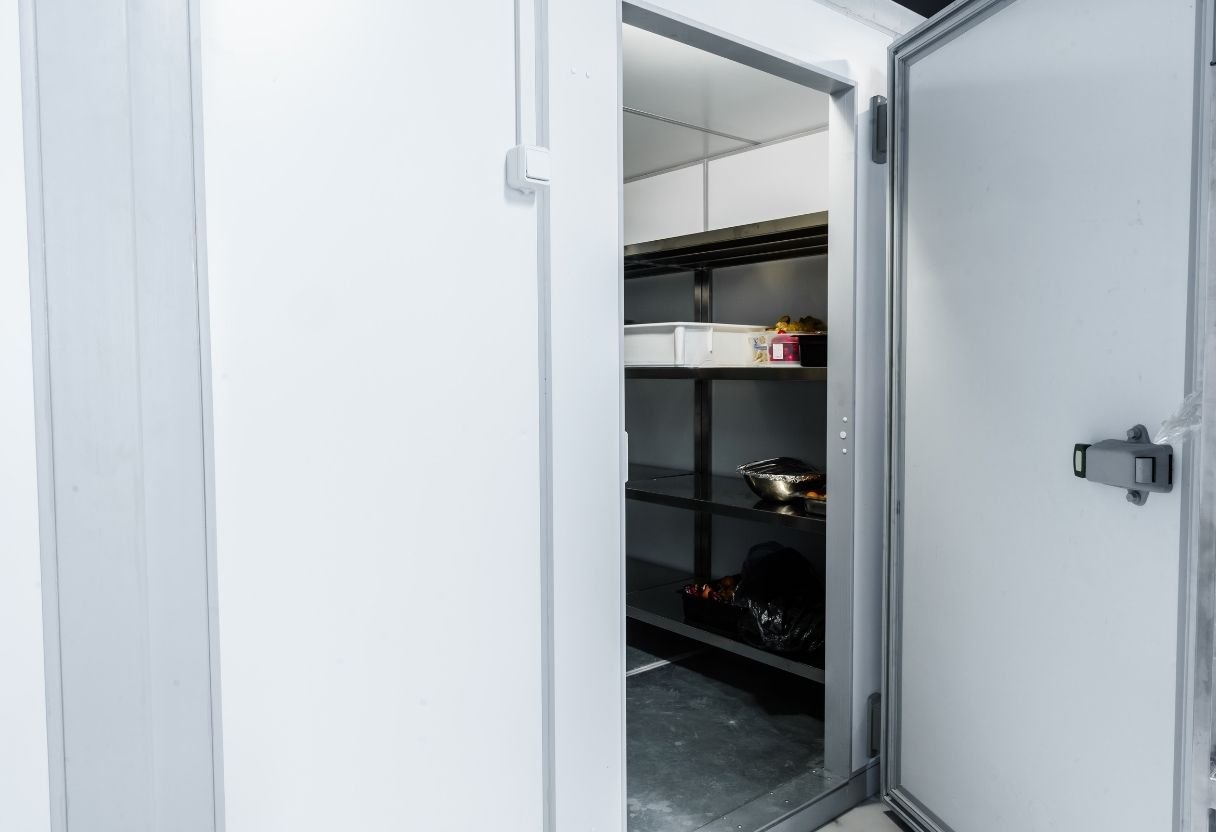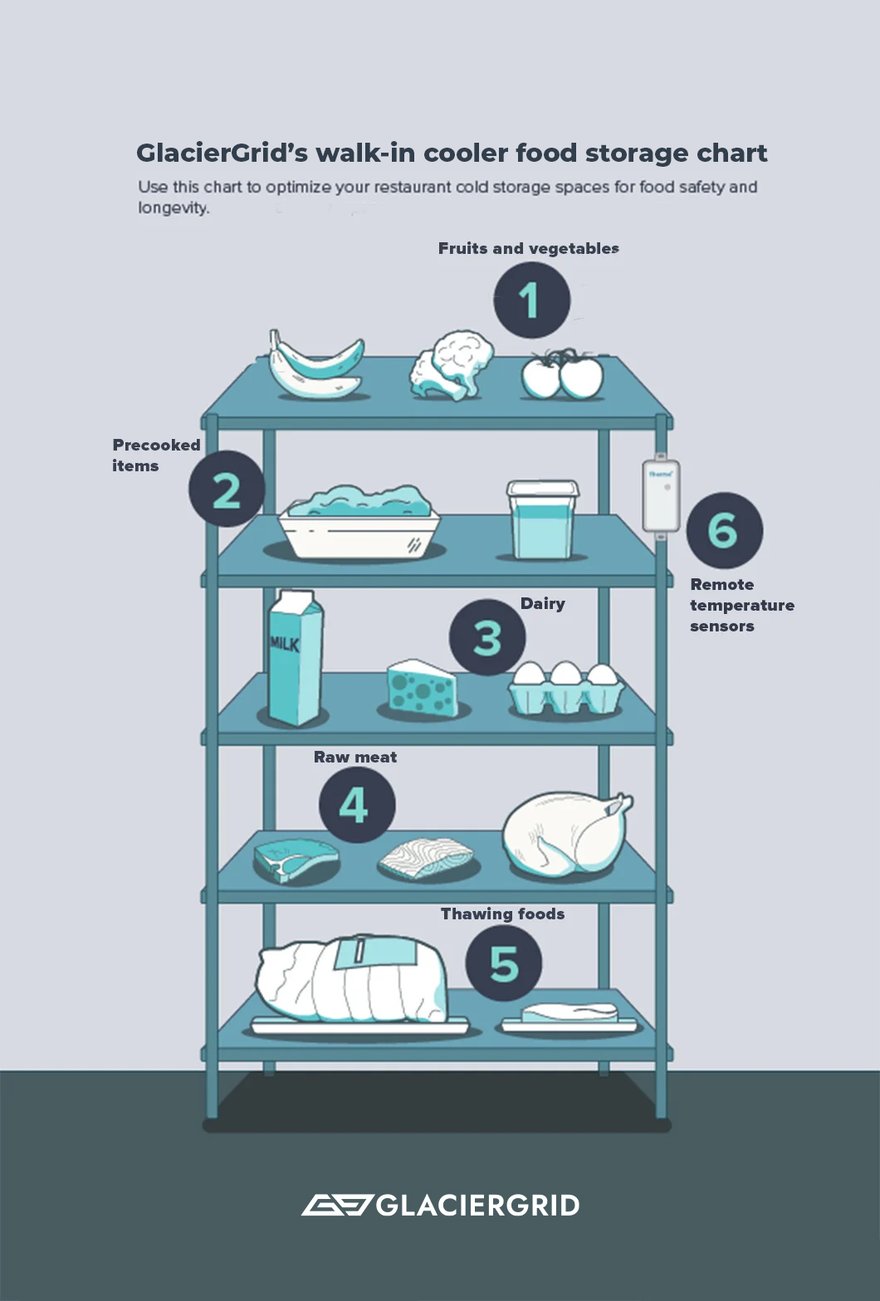Walk-in Cooler Food Storage Chart

Restaurant teams rely heavily on their walk-in refrigerators. Home to the most sensitive and valuable items in your kitchen, you can’t afford to waste food due to unsafe storage practices. Proper organization is one of the keys to increased food safety in cold storage. This entails arranging your cold storage to prevent cross-contamination that can cause food-borne illnesses.
Check out this walk-in cooler food storage chart to learn the best organizational practices to protect your customers, increase inventory longevity, and reduce food waste.

#1: Fruits and vegetables
The best storage location for fruits, vegetables, and herbs is on the highest shelf in your walk-in. In general, produce contains less dangerous bacteria compared to meat and dairy. Therefore, if excess condensation from produce drips on other items within the fridge, it is less hazardous.
#2: Precooked items
You should store precooked and saved items on the shelf below produce in an optimal situation. Saved items have reached an internal temperature exceeding 145°F, killing bacteria that could be hazardous if dripped onto other foods below. However, mitigate dripping whenever possible. Though it may not be dangerous from a safety perspective, it may decrease the quality of the items stored underneath.
It is important to note that proper wrapping techniques, specifically the catering method, should prevent associated liquids from leaking. Recently cooked items still releasing steam should not be wrapped and placed on this shelf. Instead, store these items unwrapped on a speed rack in cold storage until they are at room temperature.
#3: Dairy
The best place to store dairy such as eggs, milk, and cheese is below precooked items. Dairy has slightly more potential for bacterial contamination than produce or stored items. In general, so long as it is holding at a temperature under 40°F, dairy should not risk the items stored below it. Like with all foods stored in the walk-in, there is some chance of exposure to warmer temperatures when stored near the door. Warm air tends to enter a walk-in due to the rapid opening of the doors during service. To ensure you aren’t exposing dairy to higher temperatures, ensure that the more sensitive the dairy item is, the further back it is stored.
#4: Raw meat
Below dairy is an optimal place to store raw meats. Raw meat includes fish, poultry, pork, and red meat, either fresh or already thawed. Liquids from meats are rich in bacteria and can be extremely hazardous if consumed. Ultimately, excess condensation distributed onto other items can spread food-borne illnesses such as salmonella.
#5: Thawing items
The bottom shelf of the walk-in should be devoted to defrosting meats. Defrosting meats have an increased risk of contaminating food, as they contain bacteria, and defrosting creates excess liquid and drip risks.
#6: Use GlacierGrid to monitor storage temperatures
To ensure food safety, implement remote monitoring technology such as GlacierGrid to consistently monitor food temperature. During the hectic pace of service, the rapid opening, closing, and propping of doors can create wild temperature variations. These prevalences will often go unnoticed, as busy services provide little extra time to perform temperature checks. Unfortunately, no matter how well organized your walk-in is, storage that exceeds 40°F for over 2 hours can render all of your cold inventory unsafe to serve. Remote temperature monitoring in combination with proper walk-in organization prevents contamination both from temperature excursions and cross-contamination.
Try GlacierGrid today
Click below to add GlacierGrid's remote temperature monitoring system to your kitchen today.







